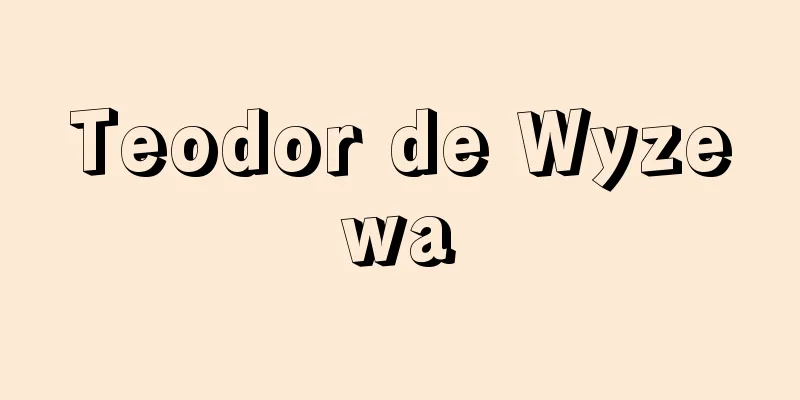Leap Second - Leap Second

|
When the difference between Universal Time and Coordinated Universal Time requires a one-second adjustment, the one second inserted or deleted is called a leap second. One second, as a unit of time determined by the rotation of the Earth, is not uniform due to irregularities in the rotation speed. Universal Time is a unit that removes this irregularity and smooths it out, but it is still not uniform. Therefore, in 1956, the International Committee for Weights and Measures decided to define one second as calendar time based on the revolution of the Earth, which is considered to be immutable. However, calendar time has the disadvantage of not being able to precisely indicate the flow of time, so in 1967 atomic time was established to hold the time of one second, and the second was switched from calendar seconds to seconds based on the vibration of cesium atoms, and the Bureau International de l'Hôte International in Paris decided to determine international atomic time. This artificial time system based on atomic seconds is called Coordinated Universal Time. The world's standard radio second signal has been transmitted based on UTC since January 1, 1972, but in order to keep it within ±0.9 seconds of UTC, adjustments are made as necessary by inserting or deleting a leap second after the last second of December and June (first priority), and March and September (second priority). Currently, because the Earth's rotation is slower and UTC is ahead, a positive leap second is inserted after 23:59:59 UTC, but if the Earth's rotation speed increases in the future and UTC falls behind, a negative leap second adjustment will be made. [Toshio Watanabe] [Reference items] | |Source: Shogakukan Encyclopedia Nipponica About Encyclopedia Nipponica Information | Legend |
|
世界時と協定世界時の差が1秒の調整を必要とするとき、挿入または削除される1秒を閏秒という。地球の自転によって決まる時の単位としての1秒は自転速度の不規則性のために一様ではない。この不規則性を取り除き、平滑化したのが世界時であるが、それでも一様ではない。そのため1956年、国際度量衡委員会は、不変と考えられる地球の公転に基づく暦表時で1秒を定義することにした。しかし、暦表時は精密に時の流れを示すことができない欠点があるため、1967年には1秒の時間を保持するものとして原子時が定められ、秒は暦表時の秒からセシウム原子の振動に基づく秒に切り替えられ、パリの国際報時局が国際原子時を決めることになった。この原子時の秒を基準とした人工的時系を協定世界時という。世界の標準電波秒報時は協定世界時に基づいて1972年1月1日から発信されているが、これを世界時の1秒の±0.9秒以内に管理するため、必要に応じ12月および6月(第一優先)、3月および9月(第二優先)の末日の最終秒の後へ閏秒を挿入、または削除することによって調整が行われる。現在は地球の自転が遅れ協定世界時が進んでいるため、協定世界時の23時59分59秒の次へ1秒挿入する正の閏秒が実施されているが、逆に将来地球の自転が速くなり、協定世界時のほうが遅れると負の閏秒の調整が行われることになる。 [渡辺敏夫] [参照項目] | |出典 小学館 日本大百科全書(ニッポニカ)日本大百科全書(ニッポニカ)について 情報 | 凡例 |
Recommend
Storehouse Secrets - Okurabiji
...Furthermore, other heretical ideas such as Ich...
Breadwinner - Daikokubashira
It is also written as Daikyokubashira. It is the ...
Ephoroi (Ephoros)
The most powerful official in ancient Greece, Spa...
Kitamura Tonobu - Kitamura Tonobu
A scholar of Japanese classics and historical res...
Ashio [town] - Ashio
A former town in Kamitsuga County, western Tochigi...
"Psychiatric Treatment of Patients" - Kanja no Seishinteki Chiryoho
…Inspired by O. Vogt, he began to study the psych...
Ethanal
…Also called ethanal. One of the aliphatic aldehy...
The Transfiguration of Christ
…According to the Old Testament, around 1200 B.C....
Alveolar oxygenator - alveolar oxygenator
...When performing surgery on the heart or large ...
Zacatecas (English spelling)
The capital of Zacatecas State in central Mexico. ...
Kunisaki Peninsula
Located in the northeastern part of Oita Prefectu...
Tragedy lyric (English spelling)
… Secondly, from the viewpoint of social backgrou...
Belobog
...Finally, the deities with the most abstract fu...
Appapa
This is the slang term for the Kansai style, given...
Envelope (English spelling)
1 envelope. 2. Something to wrap; a covering. 3. A...









